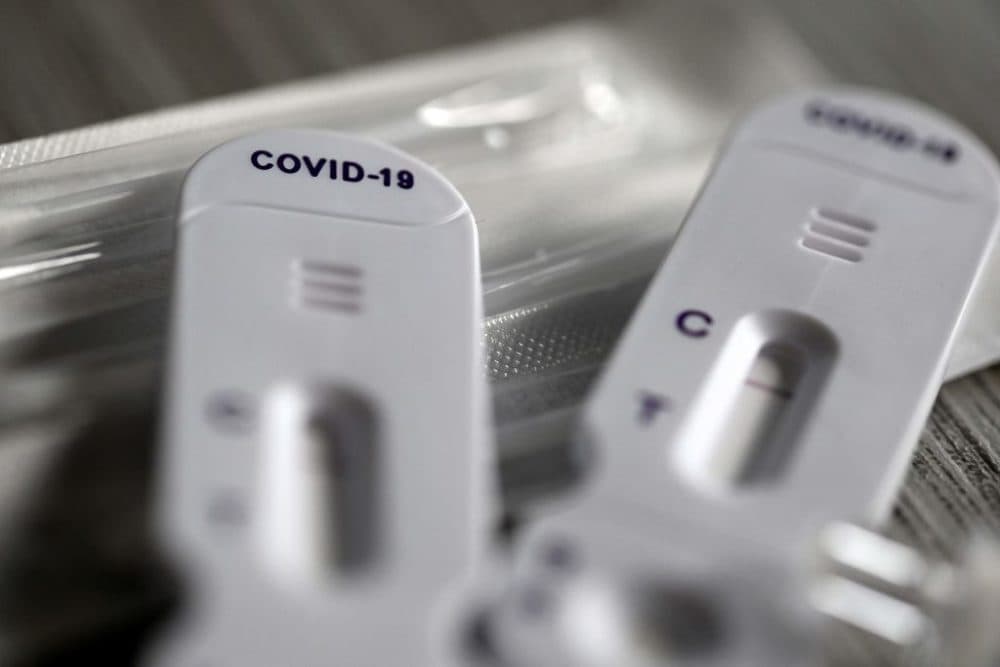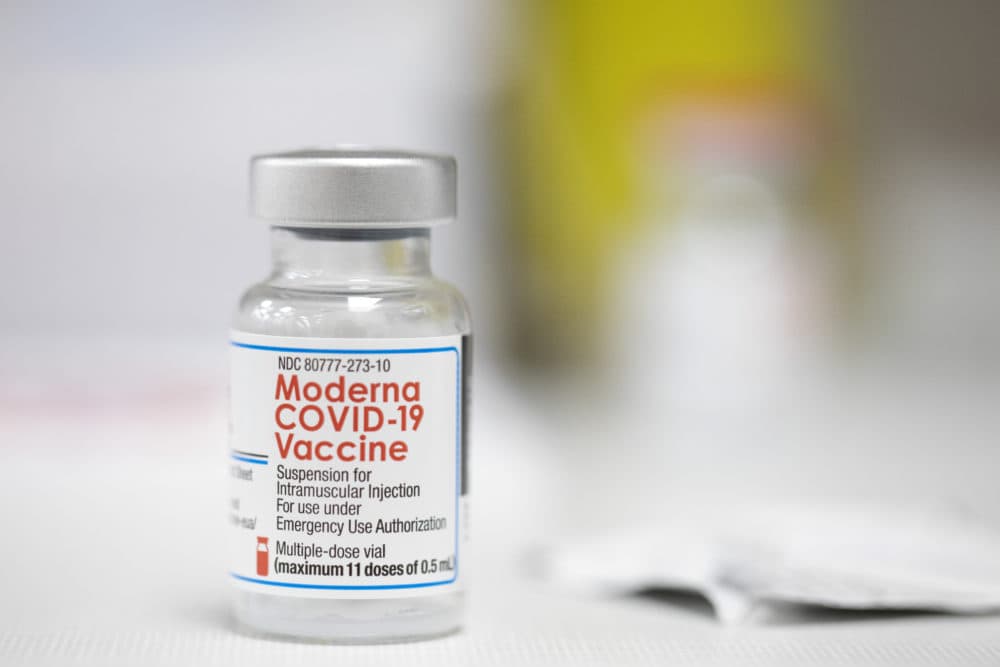Advertisement
'Our lives can look like they did back in 2019' says pandemic expert, but only by taking steps today
Resume
As the pandemic goes into its third year, it's time to work toward a new normal.
That's the message from six prominent coronavirus experts — all of them former health advisors to President Biden who met with his COVID-19 advisory board — who say they're frustrated with his administration's response.
The group has written three articles in the Journal of the American Medical Association, outlining their vision of how to create a life where we're no longer scrambling to react to the pandemic but instead puts us out in front of it, taking measures to control its worst outcomes:
Among them is Rick Bright, an immunologist, vaccine researcher and now chief executive of the Rockefeller Foundation's Pandemic Prevention institute. After watching the virus “slip out of control in many ways” over the past year with delta and omicron, he says the group wanted to present their plan to make the pandemic manageable and create a new normal.
Living under a new normal doesn’t mean forgoing all precautions or subscribing to the notion that getting sick with COVID-19 is inevitable. Instead, it’s about protection, preparedness and using the tools at our disposal, he says.
For protective measures, we have high-quality N95 masks, diagnostic tests, vaccines, treatments and therapeutics to control the pandemic. But we need to focus on preparedness, Bright argues, since the virus has shown again and again its expeditious ability to mutate.
“We need to be able to get out of this pandemic panic cycle — this whiplash if you will, a back and forth of variant, panic, variant, panic — and learn to use these tools that we have in a combined way and line them up against this virus so when the next variant does emerge, we are armed,” he says.
Bright has been dismayed by the Biden administration being caught off guard by delta and omicron. He says he warned the incoming Biden-Harris transition team one year ago this month that the virus would evolve and produce variants. But little has happened federally to stay one or two steps ahead of the virus, he says.
“You can fool me once with delta. You can fool me twice with omicron. But for God's sake, we need to make sure that we do not get fooled the third time,” he says.

The coronavirus expert group writes how bullying and berating unvaccinated people don’t work to encourage them to get the shot. There’s another complication with utilizing that tactic too, Bright says: Many people can’t be vaccinated because they're too young or have specific conditions. For that reason, unvaccinated people can’t be grouped altogether.
“Even those who refuse to get vaccinated, I think we need to look more deeply into why or how we can reach those people,” he says.
Still, in order to get the virus to a manageable level and build “a wall of immunity,” he says vaccine mandates need to be considered at the employer and national level.
Bright writes about his disappointment with the Centers for Disease Control and Prevention’s paper vaccine cards. Easily forged paper cards are “unacceptable” in the 21st century, he says.
Restaurants and other establishments checking vaccine status often have to trust the vaccine paper cards in front of them. The cards signal a need for modernizing the U.S.’s health care data systems and filling in information gaps about who’s vaccinated, who’s tested positive or negative, and other crucial information, he says.
“It would give us an upper hand to be able to tailor our tools so we can be in position to catch that virus and stop it as it emerges and spreads,” Bright says.
Public health infrastructure — down to the supply chains making crucial materials for health care workers — also needs to be evaluated, he says. Staffing in hospitals is slim because many health care workers are out sick with the virus themselves. That puts hospitals in crisis care mode with no backup plan, he explains.
Upgrading health care infrastructure will pave the way for a new normal to exist — and prepare us for any future pandemics, he says.
The long-term approach to COVID-19 needs to mimic how we handle other respiratory viruses such as the flu by preparing for a certain number of infections, hospitalizations and deaths each year, he says.
Bright says the plan also needs to include rethinking our air systems — filtration and ventilation — in order to “reduce the level of virus or pathogens in the air that we breathe.”
If all these ideas come together — forecasting new variants and updating vaccines accordingly, modernizing health care infrastructure and data systems, vaccinating more people and improving air systems — then “our lives can look like they did back in 2019 before SARS-CoV-2.”
Karyn Miller-Medzon produced and edited this interview for broadcast with Peter O'Dowd. Serena McMahon adapted it for the web.
This segment aired on January 12, 2022.

